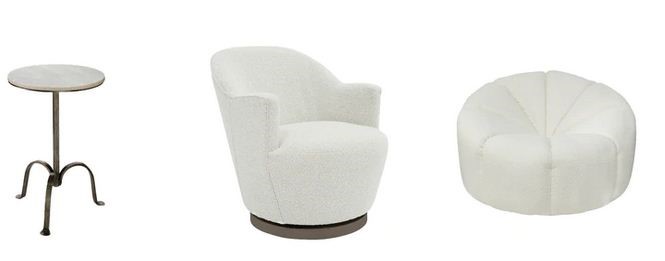
You could have a tendency to avoid traditional design out of the worry that it is dull, predictable, and stuffy because it absolutely can be all of those things.
Traditional design, on the other hand, allows for the possibility of stumbling into some very fascinating things because it makes use of so many antiques. Additionally, some of its aspects are really interesting.
But what precisely is it that makes something "traditional," and how far back does the concept of traditional go? We'll fill you in on all you need to know, and if we're successful, you won't have any reason to doubt that conventional does not always mean boring.
Traditional interior design is exactly what it sounds like: a classic, warm, comforting, and familiar style of home décor that is rooted in the traditions of the past without being specific to any one time period. Traditional interior design is a style that has stood the test of time because it is timeless and classic.

What Is Traditional Interior Design Style?
The term "traditional interior design" refers to a popular decorating style that is primarily influenced by European styles from the 18th and 19th centuries as well as traditional ideas of what a house should look like.
A classic interior design scheme is one that does not date or look dated, that is pleasant and well-put-together but does not go overboard with fancy details. Traditional interior design incorporates styles of furniture, textiles, color palettes, and decorative elements that make reference to the past and are more recognizably utilized than they are innovative.
For instance, a bedroom decorated in the traditional style might have a color scheme that is neutral; the headboard might be carved wood or upholstered; the nightstands and table lamps might match; there might be a chest of drawers; there might be an upholstered armchair and ottoman; and there might be a painting of a landscape on the wall.

Why to buy Traditional interior design for your home or office
There are number of reasons why traditional interior designs are sold and you can get such from the off-while palette. They have the best traditional mixed with modern interior designs to make your home look elegant.
Traditional Design Is Inspired By The 18th & 19th Centuries.
You probably have had it in mind that traditional design gets its motivation from, you guessed it, tradition. It is a design that will never go out of style because it takes cues from the 18th and 19th centuries and incorporates historical artifacts, antiques, and great works of art.
Traditional style is most frequently seen to be influenced by European decoration; nevertheless, it is not uncommon for it to also combine features from other countries, such as England, France, or even the Far East. Erin Gates, who specializes in interior design, adds that the styles and pieces represent historical design principles using natural materials and colors.
Even while traditional design has its roots in the past, this does not mean that it cannot or should not alter and adapt to fit the needs of the present and future.
The term "granny chic" is experiencing resurgence thanks to grandmillennials. Many historic houses built in the present day have been updated with modern touches, such as spacious kitchen islands and open floor plans.
In order to produce a variation on traditional style that many people refer to as "new traditional," contemporary designers are likely to include more contemporary pieces, bolder colors, antique and vintage furniture and décor, and so on.
The Transitional style, which is a combination of classic and contemporary design, has developed into its own distinct category of interior decoration.
Strives For Harmony and Order
It's true that classic designs with their tidy aesthetic can come off as dull and uninspired, but there's a good reason why they're so predictable.
Because the goal of traditional design is to provide an atmosphere that is serene and well-ordered, consistency is of the utmost importance.
Traditional design emphasizes symmetry and ensures that all of the furnishings coordinate with one another. When it comes to design, wild and chaotic are not compatible at all.
Traditional Furniture Is Fit For Royalty.
You'll notice a lot of regal influence in the furniture due to the fact that traditional style is mostly inspired by England and Europe during the 18th and 19th centuries.
The furniture is bulky and intricately designed, featuring details such as tufted upholstery, clawfoot baths, and carved wood. The Queen Anne chair is an armchair that is known for having curving lines, minimal decoration, a cushioned seat, and cabriole legs. It is one of the elements that helps define the design.
The wingback type of furniture is yet another popular choice. A chair like this one has a tall back, legs made of wood, and sides that are wing-like. Despite the fact that it is frequently seen in mid-century modern architecture and interior design, its roots are in traditional design.
It's All In The Details.
Given the importance of order and uniformity, character is developed via attention to minute details. China, silver, and gold are frequently utilized as decorative elements, and accessories like as candlesticks, vases, and chandeliers are lavishly ornate.
Traditional design makes use of architectural details such as crown molding, columns, and wood paneling. These elements give a space an air of grandeur while avoiding an overly showy appearance. A fireplace or a collection of oil paintings are examples of focal points that are frequently the focus of a room's design.
For All Of Its Predictability, It Feels Like Home.
If you want to instantly feel cool, new, and fashionable, minimalist or industrial designs are instant winners; however, if you want to feel more classic and at home, traditional decor is the way to go.
Along with the sense of comfort, familiarity, and accessibility that comes with predictability also comes a sense of predictability. Nothing will actually shock you or take you by surprise, but as the old proverb goes, there's no place like home.
Key Characteristics of Traditional Interior Design Style
· Furniture, décor, and art rooted in European design primarily from the 18th and 19th centuries, particularly from England and France
· Design is based on styles of the past but often finished with fewer fine ornamental details
· Rooms are set up to be functional, family-friendly, and comfortable
· A focus on symmetry includes conventional space planning centered around classic uses of space; pairs of furniture and objects such as armchairs or lamps; and an overall harmonious feel
· The interiors may feature traditional architectural components such as crown molding and wainscoting.
· The color palettes use subdued neutrals with sparing use of vibrant colors.
The wood finishes on the flooring and furnishings tend to be darker. Walls are typically painted in muted neutrals, but subtle patterned wallpaper in traditional motifs like floral, stripes, or damask may be included. Textiles are typically neutral or subtly patterned like the wallpaper, and they may include heavy cotton, wool, velvet, fur, and silk. Walls are typically painted in muted neutrals.



